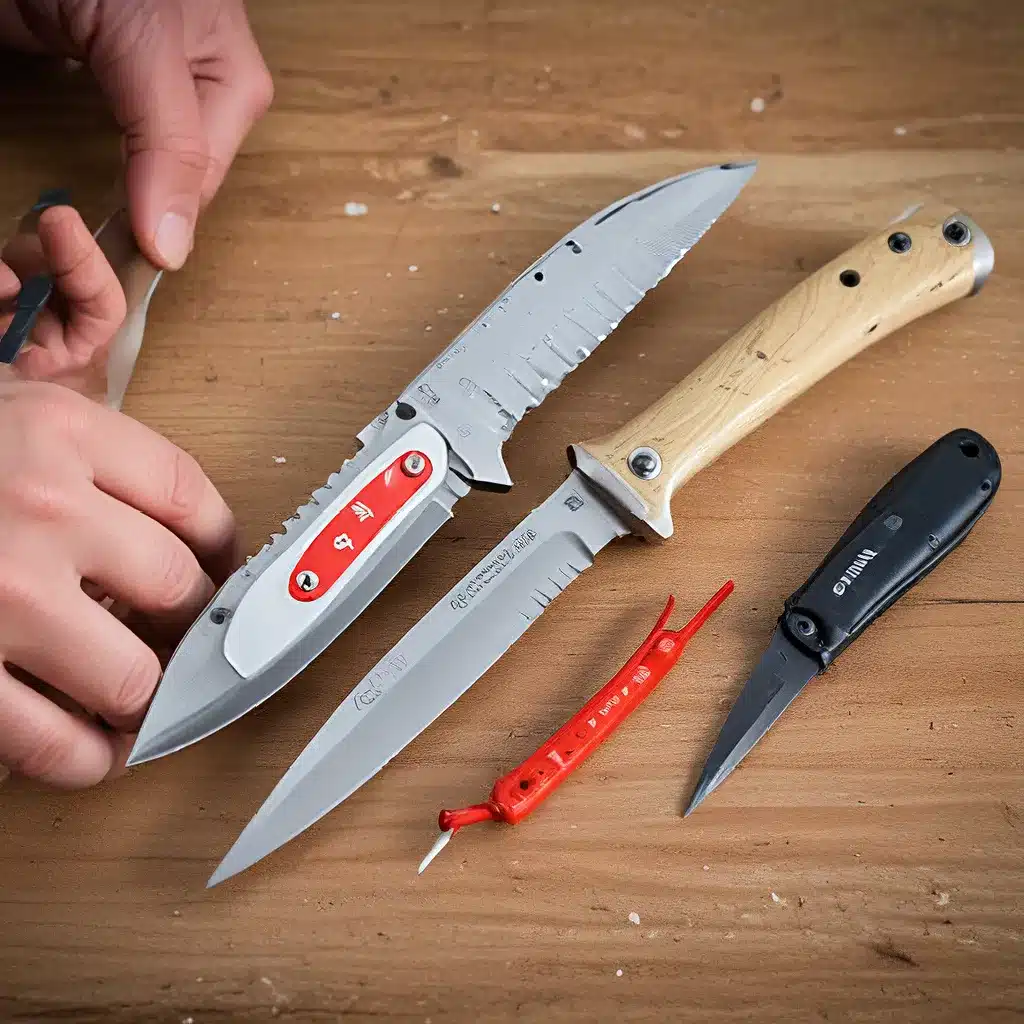
As a passionate knife enthusiast, I know the pain of dealing with a dull, damaged, or malfunctioning blade. Whether it’s a treasured heirloom or your daily workhorse, a knife in need of repair can bring your culinary exploits or outdoor adventures to a screeching halt. But fear not, my fellow blade aficionados! Today, I’m here to share my hard-earned knowledge on the art of knife first aid – emergency repairs and quick fixes that can have your trusty sidekick slicing and dicing like new in no time.
Damage Assessment: Identifying the Problem
The first step in treating a sick knife is to thoroughly assess the damage. Is the edge just a bit dull, or is it severely chipped and jagged? Has the blade become bent or warped? Is the handle loose or cracked? Carefully inspect your knife from tip to tang, and make a mental note of all the issues you need to address.
Knife Aid is an amazing service that can take care of the heavy lifting when it comes to sharpening and restoring your blades. But for those quick-fix situations where you need to get your knife back in action right away, here are some essential emergency techniques to have in your arsenal.
Edge Repair: Sharpening on the Fly
A dull edge is one of the most common knife ailments, and it’s also one of the easiest to remedy in a pinch. If you find yourself with a blade that’s lost its razor-sharp edge, try field sharpening it with a portable sharpener or even the bottom of a ceramic mug. These makeshift sharpening tools may not produce the mirror finish you’d get from a professional job, but they can quickly restore enough of an edge to get the job done.
Another handy trick is to use a stropping block – a smooth piece of leather, wood, or even cardboard – to hone the edge. Carefully draw the blade along the surface a few times, applying light pressure. This can straighten out any minor bends or deformities in the edge and leave you with a surprisingly sharp knife.
Blade Repair: Bending and Realignment
If your blade has taken a nasty bend or twist, don’t panic. With a little elbow grease and some creative problem-solving, you can often straighten it out. Carefully clamp the blade in a sturdy vise, then use a smooth-faced mallet or the back of a heavy knife to gently tap the bend back into alignment. Go slowly and check your progress frequently to avoid over-correcting the issue.
For more severe bends or warping, you may need to resort to heat treatment. Carefully hold the affected area over an open flame, such as a lighter or candle, until the metal glows slightly. Then, use pliers or tongs to carefully bend the blade back into shape while it’s still malleable. Be extremely cautious when working with hot metal, and always wear protective gloves.
Handle Repairs: Securing and Stabilizing
A wobbly, loose, or cracked handle can be just as much of a headache as a dull or bent blade. Fortunately, there are a few quick fixes you can try to shore up your knife’s grip.
If the handle is simply loose, try tightening any screws or bolts that secure it to the tang. A dab of threadlocker or even a small amount of superglue can help lock the components in place and prevent further loosening.
For more substantial handle damage, such as cracks or breaks, you may need to get a bit more creative. Epoxy is a miracle worker when it comes to knife repair, as it can effectively bond and reinforce the handle material. Apply a generous amount to the affected area, clamp or tape the handle in place, and let it cure fully before using the knife again.
Accessories and Extras: Enhancing Function
While not strictly “first aid” in the traditional sense, there are a few extra accessories and add-ons that can help extend the life and functionality of your knives.
Blade guards or sheaths are a must-have for protecting your knife’s edge when not in use. These simple covers can prevent nicks and dings, keeping your blade in pristine condition for years to come.
Replacement parts, such as new screws, bolts, or even entire handles, can be a lifesaver if a critical component fails. Familiarize yourself with the specific parts and construction of your knives, and keep a few spares on hand for emergencies.
And don’t forget the power of preventative maintenance! Regularly cleaning, oiling, and storing your knives properly can go a long way in avoiding the need for first aid down the line. A little TLC goes a long way in the world of blades.
Conclusion: Embracing the Art of Knife Rescue
Knife ownership is a badge of honor, but it also comes with the responsibility of maintaining and caring for your blades. By mastering the art of knife first aid, you’ll not only extend the life of your trusty tools but also develop a deeper appreciation for the craftsmanship and mechanics that make them so special.
Remember, a well-cared-for knife is a joy to use, whether you’re whipping up a gourmet meal or tackling an outdoor adventure. So the next time your blade needs a little TLC, don’t despair – embrace the challenge, channel your inner knife-whisperer, and bring that baby back to life!
And if all else fails, be sure to check out the amazing services offered by Herman Knives – they’re the experts when it comes to restoring your blades to their former glory. Happy slicing and dicing, my friends!


